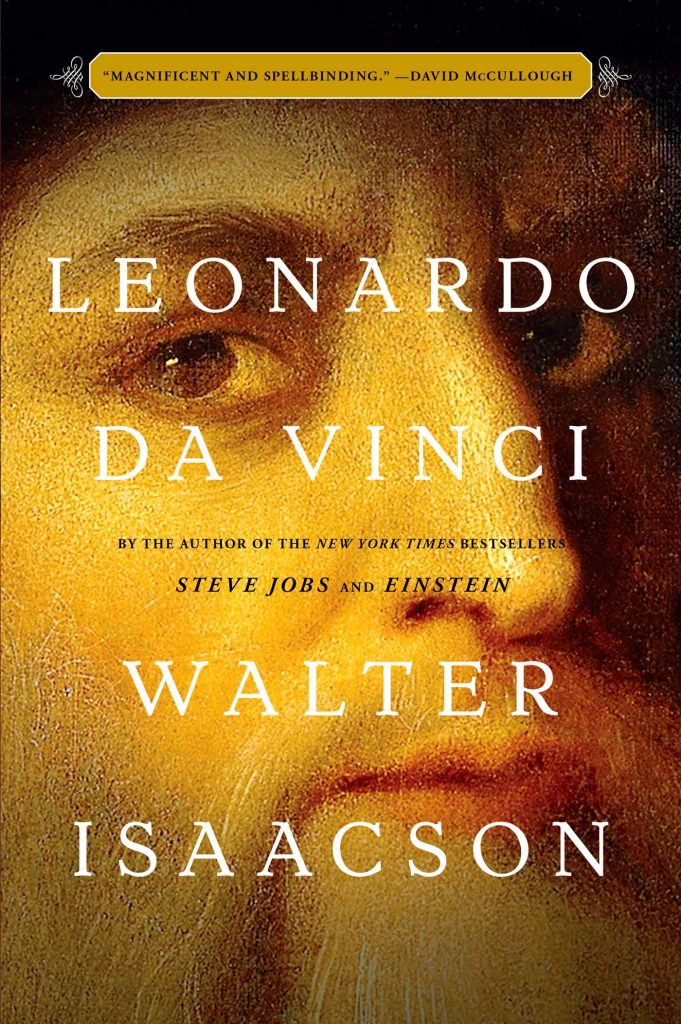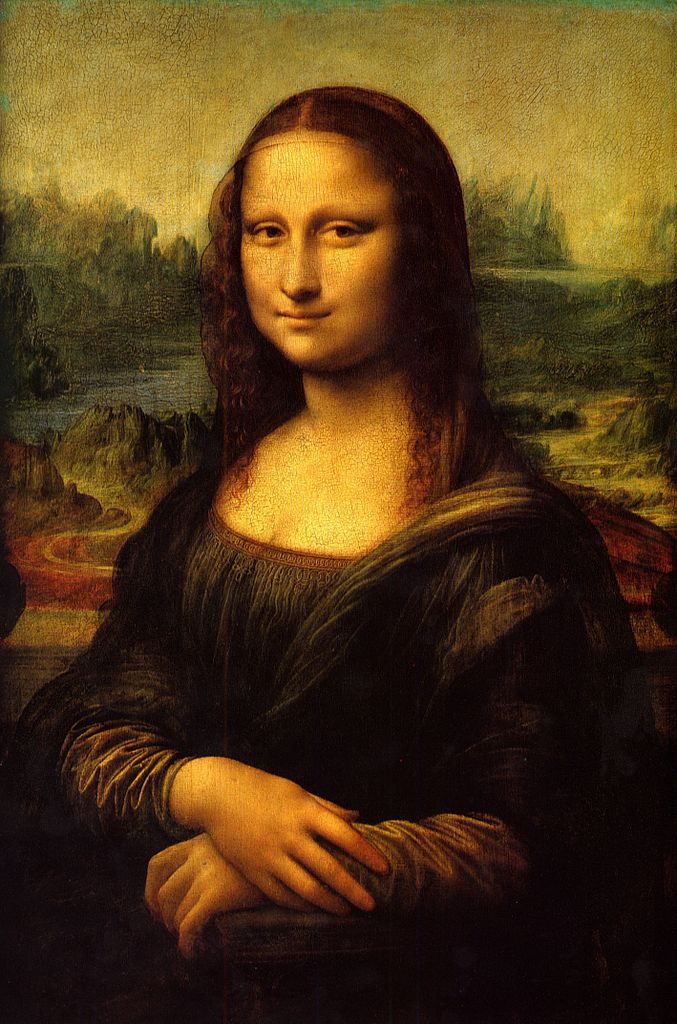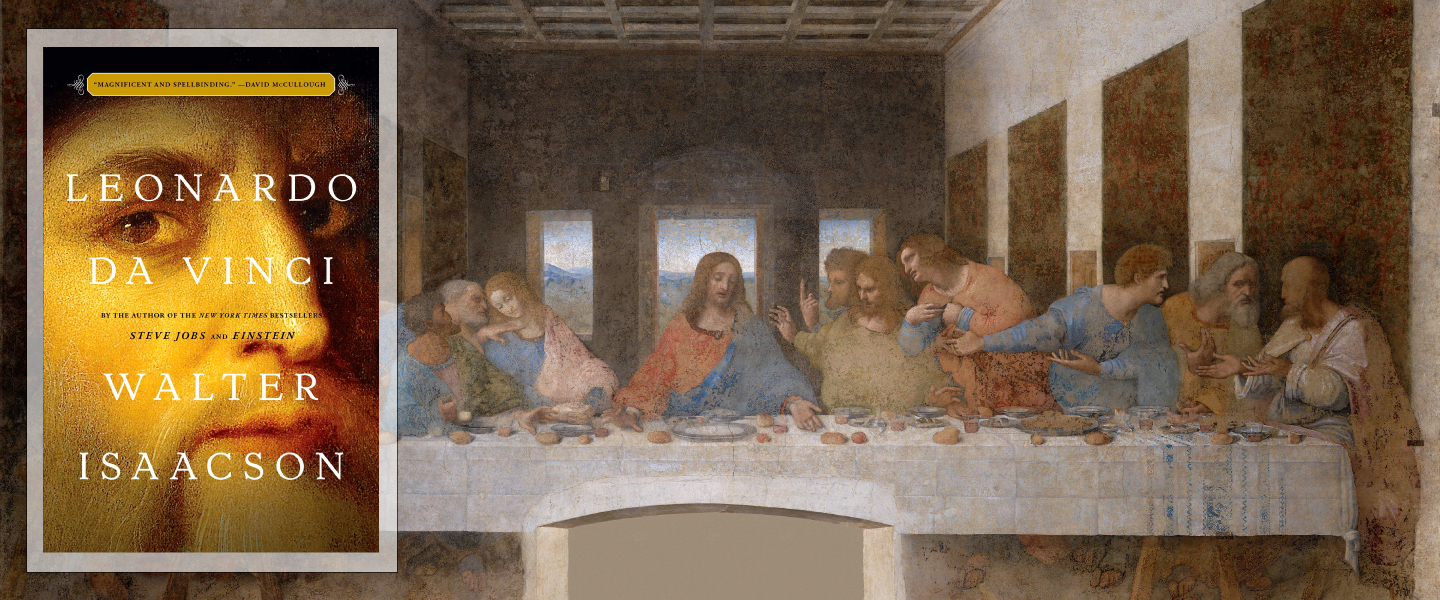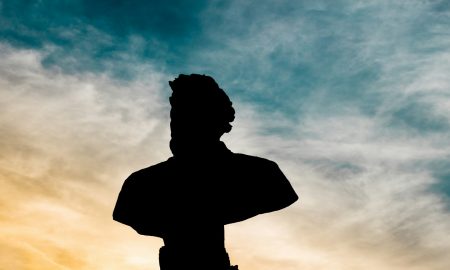Leonardo da Vinci is the kind of thinker the world needs today. Yes, he has already done his share of work and contributed much to the science of art and the art of science. I wish though that there are more of his kind in the world. Luck, good fortune, destiny, or whatever you call it, has a large role to play. Everything must come together, or as some may say, all the stars must come in line for a gifted person such as Leonardo to be born again. That, of course, is the easy way to dismiss the Leonardo Da Vinci phenomenon—call him “gifted.”
Or, we could read about him in a new biography, written by Walter Isaacson, and try to understand what made a Leonardo the Leonardo da Vinci, scientist of several subjects, engineer of various inventions and painter of two of the world’s most famous paintings (Mona Lisa and The Last Supper). Why read this new biography? There are numerous biographies of Leonardo Da Vinci and some of them were published not too long after his death. Walter Isaacson breaks Leonardo down to who he is: a normal human being, just like me, with his share of errors and weaknesses. He doesn’t excessively glorify Leonardo as this superhuman figure, a polymath, multifaceted, gifted genius. Walter Isaacson shows us that we can all be or at least try to be in some small way a Leonardo. He accedes the genius of Leonardo but also impresses upon the reader that it is a kind of genius we can all tap inside ourselves. And, he leaves us with a book that is so timely that I have already—before having written this review—started recommending it to youngsters I know, some misdirected and some misinformed, but all very creative.

Curiously Observant and Observantly Curious
Leonardo is not some alchemist who turned every stone he touched into gold. He didn’t finish a fraction of the work he started. Much of his work remained in his notebooks, pages of which there are several with only a few enduring the weather of time. Isaacson writes,
“The more than 7,200 pages now extant probably represent about one-quarter of what Leonardo actually wrote, but that is a higher percentage after five hundred years than the percentage of Steve Jobs’s emails and digital documents from the 1990s that he and I were able to retrieve.”
In his notebooks, Leonardo probably wrote every thought that came to his mind. Every observation, everything he was curious about (there’s a lot of that), everything he intended to do (a lot of that too, especially stuff he never ended up doing), sketches of works in progress, sketches of anatomy, optics, and a number of other sciences; Leonardo’s notebooks are a treasure trove. Historians have codenamed each notebook and classified it in different ways so as to understand them better. Some of the notebooks are stored in museums and public offices, while others remain in private collections (such as the Codex Leicester which remains in Bill Gates’s personal collection).
Embed from Getty Images
I can’t imagine the dilemma Isaacson faced while weighing and prioritising the information he would include in the biography from the several thousands of pages he received access to. Leonardo wrote his notes in a mirror script and oriented them from right to left (to avoid smudging while writing with left hand) in mostly tiny size (in order to save paper). They are mostly undated and one can only guess the chronological order. Hidden beneath all these minutiae, the notebooks contain observations that went unnoticed in that age and time, but became part of inventions and discoveries by other scientists who came centuries later. Had Leonardo taken the time to put together the notes into a coherent treatise, he would have been credited with many of the discoveries made in physics, anatomy, hydraulics and optics in the later part of the millennium. He couldn’t be troubled with a task so demanding though.
The virtue of note-keeping, especially on paper, can never be overemphasized. A bulk of Leonardo’s notebooks have lasted many generations. As Isaacson concedes in the book, our tweets likely won’t last for a fraction of that period. Today, those notebooks give us a glimpse into the workings of the man’s mind 500 years after he has passed.
The Quest for Perfection
If it is some consolation to know, Leonardo procrastinated a lot. It is painful to see some of his unfinished works. The Adoration of Magi, one of Leonardo’s works in progress, is probably the most important unfinished work of art by any painter ever. Isaacson does not mystify the work though. He goes line by line deriving meaning and intention from each of Leonardo’s stroke.

That is not the only example. There are many other works, not just of art but of science as well, that Leonardo conceptualized but never completed. And there are also the paintings he would come back to every now and then and sometimes even fifteen years later, to put another touch of refinement. Mona Lisa was found in his studio after he died. He was probably not done with it yet, as perfect as the painting may seem to us today.
The habit of procrastination gave Leonardo a reputation of unreliability. Isaacson writes, “Leonardo’s record of unreliability was not simply because he decided to give up on certain paintings” and that he “wanted to perfect them, so he kept hold of many of them for years, making refinements.”
The procrastination was not just about perfection. The procrastination probably gave him a chance to think of the work again in new light. Most of Leonardo’s completed works—modern day technology would show—had gone through a number of changes from the time it was a sketch till it became a fully realised painting or work of art. These changes probably were a reflection of the number of studies he was carrying out simultaneously.
While Leonardo was working on The Last Supper, the Duke of Milan who commissioned the work was frustrated with the progress. Isaacson writes, of this instance,
“When Leonardo was summoned by the duke, they ended up having a discussion of how creativity occurs. Sometimes it requires going slowly, pausing, even procrastinating. That allows ideas to marinate, Leonardo explained. Intuition needs nurturing. ‘Men of lofty genius sometimes accomplish the most when they work least,’ he told the duke, ‘for their minds are occupied with their ideas and the perfection of their conceptions, to which they afterwards give form.’”
Perfection is undervalued in modern times. We are told to bring a product out before it has been perfected so that there is a product instead of none. We are told there can be a version 2.0 later when a better feature presents itself. Agility is considered a value of virtue among software engineers and mobile phone app builders. The world we live in demands commercial value in everything we do. And a thing is only of commercial value if we bring it out in time. Leonardo would not have conformed to this idea though. An artist must strive for perfection and that’s what Leonardo did in art or science even if it took a lifetime to complete.
Experience and Experiment
It’s already clear that Leonardo was insanely curious (“describe the tongue of the woodpecker”) and intensely observant(“observe the goose’s foot”). He also experimented in a wide range of subjects. The reason he probably took this approach of experience and experiment is that he didn’t go through formal schooling like most of us. He was mostly self taught and did not have wisdom handed down to him from a higher authority. Isaacson writes in the introduction,
“Leonardo [was] spared from being trained to accept dusty Scholasticism or the medieval dogmas that had accumulated in the centuries since the decline of classical science and original thinking. His lack of reverence for authority and his willingness to challenge received wisdom would lead him to craft an empirical approach for understanding nature that foreshadowed the scientific method developed more than a century later by Bacon and Galileo. His method was rooted in experiment, curiosity, and the ability to marvel at phenomena that the rest of us rarely pause to ponder after we’ve outgrown our wonder years.”
This scientific approach to learning did not imply that he only believed what he learnt through his experiments. Leonardo wasn’t afraid of admitting his mistakes and was willing to be corrected, when there was a convincing explanation to the topic or phenomenon under study.
Creating for Patrons, as well as for Himself
Leonardo did not always disregard authority, although such a picture emerges from time to time. He seemed attracted to power and sought out patrons for means of continuous sustenance. He famously wrote a letter to the Duke of Milan offering his services as a scientist and engineer of weapons, in which he also mentions towards the end, “Likewise in painting, I can do everything possible, as well as any other man, whosoever he may be.”
Leonardo would take long breaks from painting such as at the time he wrote the letter to the Duke of Milan. He also declined several commissions from wealthy patrons because the work itself didn’t interest him too much. Some of these commissions would have given him a decent pay, but his refusal to take up some of these works show that above all, Leonardo created for himself and not for the person of authority who hired him.
The painstaking detail in his later works and his hesitation to let go of the painting until he was completely satisfied also pointed to the fact that he was above all satisfying his own ego. He did not deliver the Mona Lisa, for example, to the patron who commissioned it and continued to work on it until his death. He may have offered his services as a scientist and inventor to the ruler of Milan rather than as a painter—even though he had hardly done anything worthy of mention in science until then— so that he wouldn’t be pressurised to pick up the brush and paint against his will. He was confident of doing much in the field of weaponry and hydraulics by then, and there’s plenty of evidence that points to this in his notebooks. His intention may also have been to secure for himself a periodic retainer that would give him the freedom and means to do other work in which he would take interest from time to time. He continued to work for one wealthy patron after the other in this manner till the time of his death, at which point he was under the patronage of King Francis I of France.
These employments were not all very pleasant. There was, for example, the work he did under Cesare Borgia, along with another thinker of the time, Niccolo Macchiavelli, whose book, The Prince is based on the character of Cesare Borgia. Cesare Borgia was a ruthless tyrant and it was difficult to imagine how Leonardo could work as a military engineer for someone as sinister as him. Yet, under Borgia, Leonardo “made what may be his greatest contribution to the art of war.”
“It is a map of Imola, but not any ordinary map. It is a work of beauty, innovative style, and military utility. It combines, in his inimitable manner, art and science…. Acting as an artist-engineer, Leonardo had devised a new military weapon: accurate, detailed, and easily read maps. Over the years, visually clear maps would become a key component of warfare. For example, the U.S. National Geospatial-Intelligence Agency (originally known as the Defense Mapping Agency) had 14,500 employees and an annual budget exceeding $ 5 billion in 2017. Projected on the walls of its headquarters are maps combining accuracy with beauty, some of which bear a striking resemblance to Leonardo’s map of Imola.”
The Mona Lisa: A Cumulation of his Studies and Distractions
Throughout his life, Leonardo undertook what may seem to be diversions from painting, for which he once trained as an apprentice under an older artist, Verrocchio. Strewn across Walter Isaacson’s biography of the artist are pages and pages of what may seem to be useless information, such as one discourse on the flight of birds and a couple of them on anatomy. The chapter on hydraulics also may seem uninteresting if one has no background in engineering.
It was perhaps intentional on Isaacson’s part to include all these details in the book, as Leonardo’s life isn’t complete without this occasional dabbling in subjects that may seem useless to most at one time. However, Isaacson, through Leonardo’s life, makes a beautiful case for embracing “useless” knowledge and training our mind to different perceptions of the world rather than resting only in one specialisation. Even a hobby-like interest in a non-tangential subject could throw new perspective in whatever work it is that we are doing, whatever specialisation it is that we are mastering.
Critics often complain that Leonardo wasted far too much time on not just hydraulics, anatomy, weaponry and aviation, but also on the study of optics, of light hitting an object, of shadows. These cross-disciplinary diversions may attract the attention of a practicing psychiatrist today. Leonardo may be a subject of study for impulsively jumping from one thing to the other to the other. Yet, when you look at the collective work that came out of Leonardo—most famously The Last Supper and Mona Lisa, but also other works like the Virgin of the Rocks—it is now obvious that they cannot have been completed without the insight he received from his cross-disciplinary meddling.
In the book, for this reason, the chapter on Mona Lisa appears towards the end, even though Leonardo was known to have started working on it sometime around 1503, sixteen years before his death. As Isaacson explains, “it makes sense to consider the Mona Lisa near the end of his career, exploring it as the culmination of a life spent perfecting an ability to stand at the intersection of art and nature.”
I had the pleasure of peeking at, not viewing, the Mona Lisa in Paris last year. The crowd around it disallows anything more than a peek. It’s much smaller than I imagined it to be. I have seen bigger copies of it in other places and can even get a better picture of it from the Louvre guide which I bought at the venue. Yet, when I finally had that peek of Mona Lisa, it took my breath away in a way that it hadn’t before.

It must have been an elder sister who first told me about the Mona Lisa. I must have been a boy less than ten years then. I remember that because when I later went to boarding school and had animated discussions late in the night, at least some of those discussions were about the mysteries within the Mona Lisa and I remember being somewhat aware of the painting and many of the mysteries it left behind. Who was she? Was she smiling? What happened to her eyebrows? The stories and explanations were products of both imagination as well as hearsay of hearsay of hearsay.
The second time the Mona Lisa took my breath away was when I read this biography of Leonardo Da Vinci. Walter Isaacson’s book provides a detailed study of at least some of the mysteries that the Mona Lisa leaves behind. And I finally can quash many of those hearsay theories. The chapter on Mona Lisa shows how Leonardo has developed as a painter from the time he made another portrait, Ginevra de’ Binci, as a young painter in Florence, to the time he laid the last touches to Mona Lisa. Isaacson writes,
“Ginevra de’ Benci was made by a young artist with astonishing skills of observation. The Mona Lisa is the work of a man who had used those skills to immerse himself in a lifetime of intellectual passions….
“As Leonardo worked on it for most of the last sixteen years of his life, it became more than a portrait of an individual. It became universal, a distillation of his accumulated wisdom about the outward manifestations of our inner lives and about the connections between ourselves and our world. Like Vitruvian Man standing in the square of the earth and the circle of the heavens, Lisa sitting on her balcony against the backdrop of geological eons is Leonardo’s profound meditation on what it means to be human. And what about all of the scholars and critics over the years who despaired that Leonardo squandered too much time immersed in studying optics and anatomy and the patterns of the cosmos? The Mona Lisa answers them with a smile.”
He also dedicates a whole section to the Mona Lisa smile. There were hints of Leonardo’s work in this direction in some of the sketches from his study of human anatomy. Through his dissections, Leonardo researched deeply on what muscles produce our smile, and sketched various cross-sections of human faces and their grins. Of the Mona Lisa smile, Isaacson writes,
“There is a mystery to the smile. As we stare, it flickers. What is she thinking? Our eyes move a bit, and her smile seems to change. The mystery compounds. We look away, and the smile lingers in our minds, as it does in the collective mind of humanity. Never in a painting have motion and emotion, the paired touchstones of Leonardo’s art, been so intertwined.”
My Review of the Book
The chapter on Mona Lisa became my favourite chapter in the book and one I look forward to reading again. There is also the chapter on Vitruvian Man, which offers insights into the workings of Leonardo’s mind and his pursuit of mathematical perfection in the human body.
Another part of the book, which read like a fast paced mystery thriller, narrates a twenty-first century tale of one twist after another as experts investigated what was possibly a hitherto unknown Leonardo painting, La Bella Principessa. For some lesson or the other, I must return to this book again and again, to pick up something I hadn’t noticed before, to learn the answer to a question I haven’t asked yet. Leonardo may not approve though. He would have liked me to experience and experiment, above believing the written word.
For me, the sketch that stood out above all was from a study Leonardo did for the angel while working on Virgin of the Rocks. It is difficult to perceive the work as only a sketch. It feels almost real. The sketch seems to be coming out of the page and for some time I couldn’t stop looking at it. Isaacson writes about it in similar fashion,
“The drawing is fascinating because it is one of the best displays of Leonardo’s genius as a draftsman. With a few simple lines and brilliant strokes, concise and precise, he is able to create a sketch of unsurpassed beauty. At first glance it captivates you, then its deceptive simplicity draws you into a prolonged and profound engagement. The pioneering Renaissance art historian Bernard Berenson called it “one of the finest achievements of all draftsmanship,” and his protégé Kenneth Clark proclaimed it “one of the most beautiful, I dare say, in the world.”

And then, at the end of this otherwise marvelous book, Walter Isaacson did something I really wish he hadn’t. He wrote a chapter called “Conclusion”. He could have written a short conclusion, a page or two. He didn’t. He distilled the message and lessons from Leonardo’s life to give us, the readers, a list of things to do. In this age of listicles, just reading that one chapter would save the pain of buying a heavy book such as this. Yet, for all that the chapter compresses, it fails to give the reader that pleasure of having unraveled it himself. The life of Leonardo da Vinci offers us many lessons, some of it obvious from our reading of it, some of it waiting to strike us at a later point in time. The conclusion that Walter Isaacson wrote takes the fun out of discovering these lessons ourselves and is, I perceive, quite contrary to how Leonardo would have liked it.
If you, as a serious reader, would like to derive maximum pleasure from this book, I’d give you two tips: one, keep a high resolution image of the paintings open as Isaacson takes us through each of the works so that you may follow his direction and description of each; and two, skip the last chapter. I recommend this book to anyone who has ever had to choose between a creative endeavour and a work that pays, to any youngster who is setting out afresh in pursuit of a career, to business leaders and management professionals who feel stuck in a silo, to doctors, engineers and other professionals who seek innovation in their work, and to just about anyone who dreams of changing the world.
***
Leonardo da Vinci
By Walter Isaacson
Simon & Schuster, 2017
Available in Hardcover, Kindle & Audible editions. (I personally recommend the Hardcover edition.)





